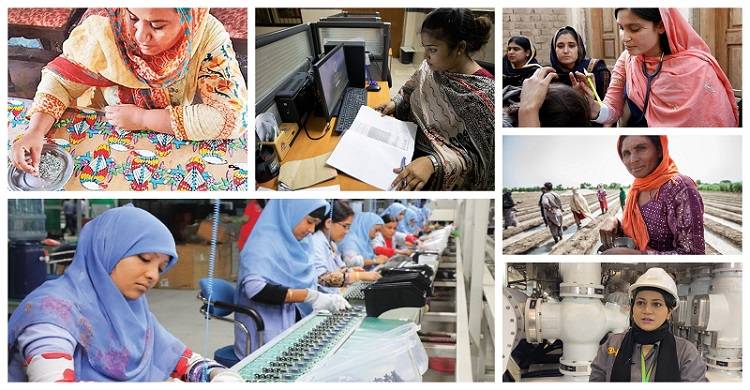
Legal experts have welcomed the enactment of Protection Against Harassment of Women at the Workplace (Amendment) Act, 2022, as the development has expanded and strengthened the scope of workplace protection for women.
The new law builds upon an earlier version, ratified in 2010, which narrowly defined the scope of 'harassment', 'workplace,' and 'employee'.
1) Definition of 'sexual harassment' elaborated
"The law had always been limited to sexual harassment of a physical nature. But now, the definition of harassment has been expanded and has been defined more broadly," acclaimed lawyer Nighat Dad told Geo TV.
"The law will not only protect individuals against workplace harassment of a physical nature but will also cover other forms of harassment as well as gender discrimination at the workplace," she said, adding that it was a 'revolutionary step' towards ensuring the rights of women in the workplace.
In its definition of harassment, the law includes staring, comments regarding someone's appearance, making fun of someone, passing snide comments, as well as harassment on social media or any other behavior which creates a hostile environment.
2) Definition of 'employee' expanded
The law also expands the definition of an 'employee.' The previous law only defined an employee as a worker with a formal contract. However, the new law has expanded its definition to include informal workers, which account for 70 per cent of Pakistan's workforce, as well as domestic workers, artists, freelancers, remote workers, and students.
3) Transgender people also covered
The definition of workplace is no longer confined to an office, but includes any location where a person is engaged in work, reflecting changing working styles following the Covid-19 pandemic. Furthermore, the law will now protect transgender people, as well.
4) Victim no longer bound to prove a 'pattern' of abuse
Previously, many non-traditional female workers had little recourse in the event of an assault or harassment at the workplace. Now, the law orders an ombudsperson to decide on a case within 90 days of the petition, and removes the burden on the victim to prove a 'pattern' of abuse. Instead, victims can now utilize audio or video proof as evidence.
The new law builds upon an earlier version, ratified in 2010, which narrowly defined the scope of 'harassment', 'workplace,' and 'employee'.
1) Definition of 'sexual harassment' elaborated
"The law had always been limited to sexual harassment of a physical nature. But now, the definition of harassment has been expanded and has been defined more broadly," acclaimed lawyer Nighat Dad told Geo TV.
"The law will not only protect individuals against workplace harassment of a physical nature but will also cover other forms of harassment as well as gender discrimination at the workplace," she said, adding that it was a 'revolutionary step' towards ensuring the rights of women in the workplace.
In its definition of harassment, the law includes staring, comments regarding someone's appearance, making fun of someone, passing snide comments, as well as harassment on social media or any other behavior which creates a hostile environment.
2) Definition of 'employee' expanded
The law also expands the definition of an 'employee.' The previous law only defined an employee as a worker with a formal contract. However, the new law has expanded its definition to include informal workers, which account for 70 per cent of Pakistan's workforce, as well as domestic workers, artists, freelancers, remote workers, and students.
3) Transgender people also covered
The definition of workplace is no longer confined to an office, but includes any location where a person is engaged in work, reflecting changing working styles following the Covid-19 pandemic. Furthermore, the law will now protect transgender people, as well.
4) Victim no longer bound to prove a 'pattern' of abuse
Previously, many non-traditional female workers had little recourse in the event of an assault or harassment at the workplace. Now, the law orders an ombudsperson to decide on a case within 90 days of the petition, and removes the burden on the victim to prove a 'pattern' of abuse. Instead, victims can now utilize audio or video proof as evidence.

